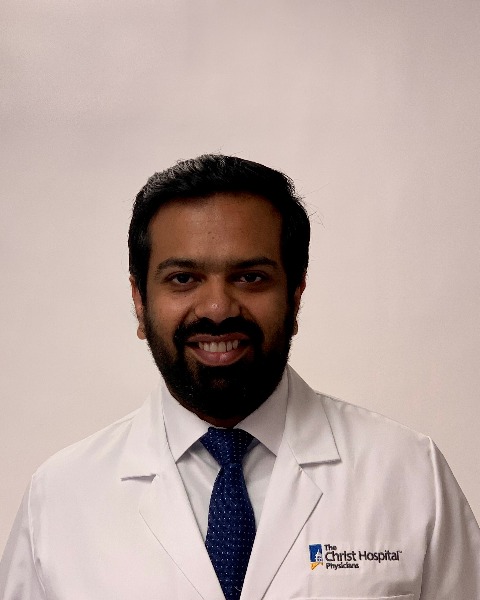Back


Poster Session E - Tuesday Afternoon
Category: Esophagus
E0242 - Novel Approach to Proximal Esophageal Stricture
Tuesday, October 25, 2022
3:00 PM – 5:00 PM ET
Location: Crown Ballroom

Has Audio

Malik W. Ahmad, MD
Christ Hospital
Cincinnati, OH
Presenting Author(s)
Malik W. Ahmad, MD1, Bushra Arshad, MBBS2, Joshua Peck, MD3, Julian Guitron, MD3
1Christ Hospital, Cincinnati, OH; 2Rai Medical College, Cincinnati, OH; 3The Christ Hospital, Cincinnati, OH
Introduction: We present you a case of Stricture-induced severe dysphagia that was discovered to be caused by ulceration secondary to very proximal Zenker’s diverticulum (ZD). This case report also describes a novel approach to esophageal endoscopy through a retrograde approach.
Case Description/Methods: Patient is an 80 y/o African American female with a past medical history of Gastroesophageal Reflux disease, Congestive Heart Failure, Chronic Kidney disease and Dementia who presented with Heart failure exacerbation. Patient reported weight loss and dysphagia to solid food and liquids for about 2 months. Patient then underwent a modified barium swallow study (MBSS), which showed concerns for esophageal stricture and evidence that the contrast material was not passing through the esophagus. Patient then underwent Esophagogastroduodenoscopy (EGD), which showed complete esophageal obstruction approximately 25 cm from the incisors and impacted food. The food was removed and a repeat EGD was done the next day showing a circumferential ulcer and no lumen could be identified. Biopsies were taken, which was negative for dysplasia or malignancy. After discussion with General Surgery, it was decided to proceed with Open Gastrostomy tube to allow enteral nutrition as well as access to dilate the esophagus in the retrograde fashion in the future.
A repeat EGD after 4 weeks showed a healing ulcer and a blind pouch without an identifiable lumen. The ultrathin scope was advanced through the gastrostomy tract into the stomach and carefully advanced in a retrograde fashion through the lower esophageal sphincter throughout the esophagus. Narrowing was seen at the proximal end of the esophagus. The scope was advanced through this and with minimal resistance able to be advanced past the level of the stricture about 15 cm from the Incisors. Esophageal stent was deployed over the wire in an antegrade fashion with fluoroscopic guidance. This time, an area of concern was identified as a possible ZD proximal to the prior ulceration site which was later confirmed on an esophagram at the level of thoracic esophagus on the right side.
Discussion: This case was challenging as the diagnosis of ZD was missed despite various testing. Patient had a long history of dysphagia and the impacted food led to ulceration and esophageal strictures. The diagnosis was established after a unique approach to the stricture. This case highlights that sometimes a careful examination is required as an approach to diagnosis of dysphagia in elderly.

Disclosures:
Malik W. Ahmad, MD1, Bushra Arshad, MBBS2, Joshua Peck, MD3, Julian Guitron, MD3. E0242 - Novel Approach to Proximal Esophageal Stricture, ACG 2022 Annual Scientific Meeting Abstracts. Charlotte, NC: American College of Gastroenterology.
1Christ Hospital, Cincinnati, OH; 2Rai Medical College, Cincinnati, OH; 3The Christ Hospital, Cincinnati, OH
Introduction: We present you a case of Stricture-induced severe dysphagia that was discovered to be caused by ulceration secondary to very proximal Zenker’s diverticulum (ZD). This case report also describes a novel approach to esophageal endoscopy through a retrograde approach.
Case Description/Methods: Patient is an 80 y/o African American female with a past medical history of Gastroesophageal Reflux disease, Congestive Heart Failure, Chronic Kidney disease and Dementia who presented with Heart failure exacerbation. Patient reported weight loss and dysphagia to solid food and liquids for about 2 months. Patient then underwent a modified barium swallow study (MBSS), which showed concerns for esophageal stricture and evidence that the contrast material was not passing through the esophagus. Patient then underwent Esophagogastroduodenoscopy (EGD), which showed complete esophageal obstruction approximately 25 cm from the incisors and impacted food. The food was removed and a repeat EGD was done the next day showing a circumferential ulcer and no lumen could be identified. Biopsies were taken, which was negative for dysplasia or malignancy. After discussion with General Surgery, it was decided to proceed with Open Gastrostomy tube to allow enteral nutrition as well as access to dilate the esophagus in the retrograde fashion in the future.
A repeat EGD after 4 weeks showed a healing ulcer and a blind pouch without an identifiable lumen. The ultrathin scope was advanced through the gastrostomy tract into the stomach and carefully advanced in a retrograde fashion through the lower esophageal sphincter throughout the esophagus. Narrowing was seen at the proximal end of the esophagus. The scope was advanced through this and with minimal resistance able to be advanced past the level of the stricture about 15 cm from the Incisors. Esophageal stent was deployed over the wire in an antegrade fashion with fluoroscopic guidance. This time, an area of concern was identified as a possible ZD proximal to the prior ulceration site which was later confirmed on an esophagram at the level of thoracic esophagus on the right side.
Discussion: This case was challenging as the diagnosis of ZD was missed despite various testing. Patient had a long history of dysphagia and the impacted food led to ulceration and esophageal strictures. The diagnosis was established after a unique approach to the stricture. This case highlights that sometimes a careful examination is required as an approach to diagnosis of dysphagia in elderly.
Disclosures:
Malik Ahmad indicated no relevant financial relationships.
Bushra Arshad indicated no relevant financial relationships.
Joshua Peck indicated no relevant financial relationships.
Julian Guitron indicated no relevant financial relationships.
Malik W. Ahmad, MD1, Bushra Arshad, MBBS2, Joshua Peck, MD3, Julian Guitron, MD3. E0242 - Novel Approach to Proximal Esophageal Stricture, ACG 2022 Annual Scientific Meeting Abstracts. Charlotte, NC: American College of Gastroenterology.
